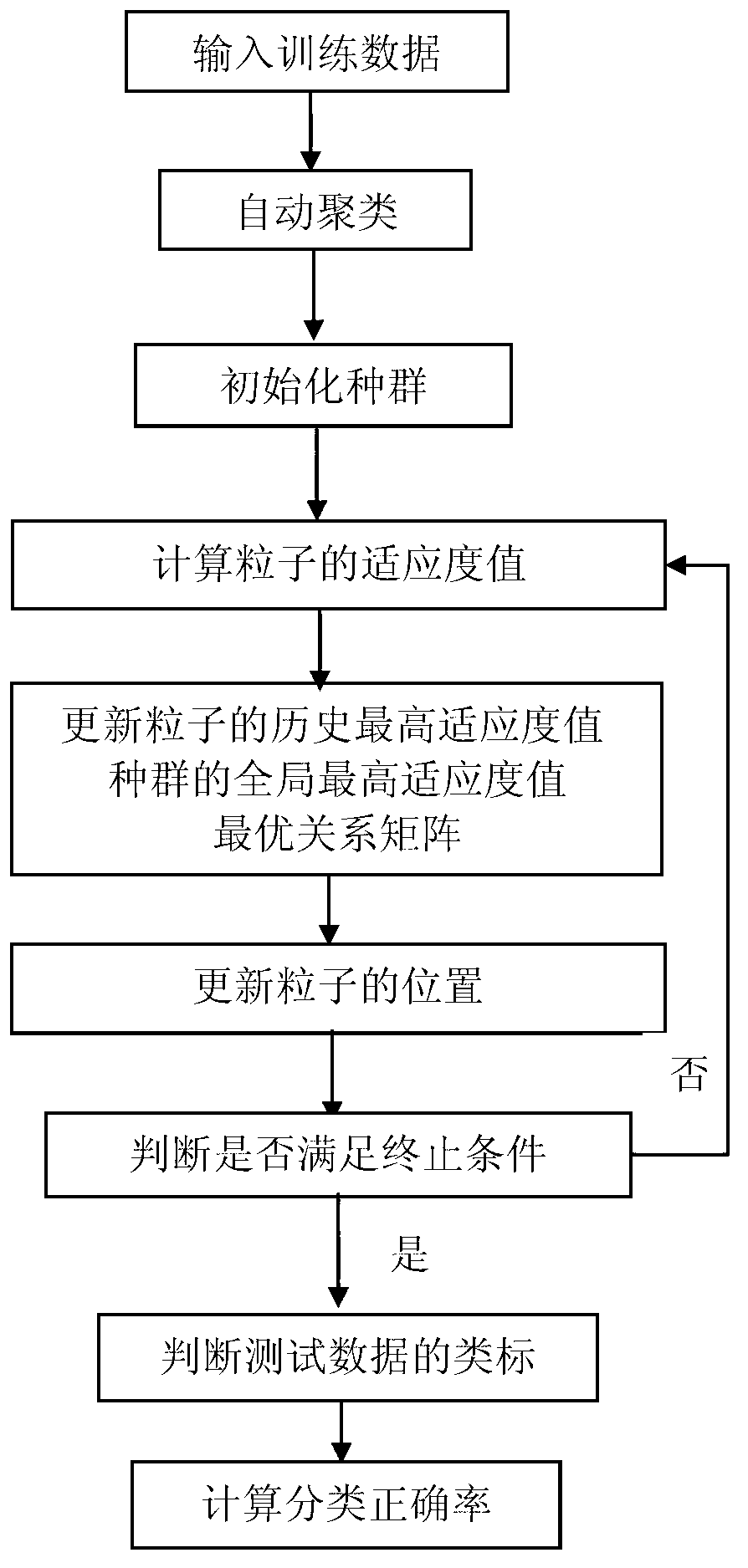Particle swarm classifying method based on automatic clustering
A particle swarm optimization and automatic clustering technology, applied in the field of image processing, can solve problems such as the influence of algorithm results and the limitation of wide application
- Summary
- Abstract
- Description
- Claims
- Application Information
AI Technical Summary
Problems solved by technology
Method used
Image
Examples
Embodiment Construction
[0039] refer to figure 1 , the realization of the present invention comprises the following steps:
[0040] Step 1, input data X, the size of data X is N×D, that is, the number of samples of data X is N, each sample is D-dimensional, and the data X is divided into training data B and test data C on average, Wherein, the sizes of the training data and the test data are both M×D, M=N / 2, and M is the number of samples of the training data B.
[0041] Step 2, input the known class label E of the training data B 1 .
[0042] Input training data B known class label E 1 , class label E 1 is a 1×M vector e, vector e={e 1 ,e 2 ,...,e i ,...,e M}, each element e in the vector e i Denotes sample b in training data B i belongs to the class, e i ∈{1,2,...,T}, T represents the correct classification number of training data B, i∈{1,2,...,M}, M is the number of samples of training data B.
[0043] Step 3, automatically cluster the training data B, and obtain the class label E of t...
PUM
 Login to View More
Login to View More Abstract
Description
Claims
Application Information
 Login to View More
Login to View More - R&D Engineer
- R&D Manager
- IP Professional
- Industry Leading Data Capabilities
- Powerful AI technology
- Patent DNA Extraction
Browse by: Latest US Patents, China's latest patents, Technical Efficacy Thesaurus, Application Domain, Technology Topic, Popular Technical Reports.
© 2024 PatSnap. All rights reserved.Legal|Privacy policy|Modern Slavery Act Transparency Statement|Sitemap|About US| Contact US: help@patsnap.com










